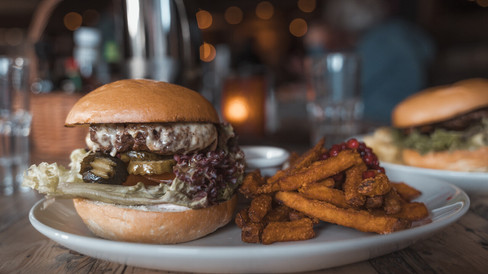Longyearbyen in Svalbard – Our Stay at the Northernmost Town in the World
- Anna & Tom

- Jul 16
- 7 min read
Longyearbyen – the name alone already sounds like adventure! This tiny settlement in Svalbard is considered the northernmost town in the world and marked both the start and end of our expedition into the Arctic Ocean.
We deliberately decided to arrive a day before our cruise and stay another day afterward. And we’re so glad we did – Longyearbyen is absolutely worth exploring. Taking time to experience this place was definitely the right call.

In this post, we’ll take you through Longyearbyen, share some of its fascinating history, show you the most interesting sights, and give you our personal tips.
Table of Contents
1. The History of Longyearbyen (Svalbard)
Longyearbyen was founded in 1906 by the American businessman John Munro Longyear, who started coal mining operations here. Even today, you can find remains of the old mines scattered around – constant reminders of the town’s tough mining past.
Back then, the town was almost entirely inhabited by coal miners.
Today, however, Longyearbyen thrives on tourism and scientific research. Fun fact: there are more snowmobiles than residents here! And if you want to leave the town limits, carrying a rifle is mandatory – due to the risk of polar bears.

Longyearbyen is located on Spitsbergen, the largest island in the Svalbard archipelago in the Arctic Ocean. Politically, the archipelago belongs to Norway, but it’s governed under a unique treaty: the Svalbard Treaty of 1920. This agreement allows citizens from over 40 countries to settle and conduct business here – making Longyearbyen a surprisingly international place, despite its small population.
2. Getting to Longyearbyen – Easier Than You’d Think
Getting to Longyearbyen in Svalbard is actually easier than it might seem – even though the place feels super remote.
We first flew to Oslo, then continued with a direct flight to Longyearbyen. The flight takes about three hours and is usually operated by SAS or Norwegian. And honestly, the view as you land is spectacular – endless Arctic wilderness. Just wow!
At Longyearbyen Airport, you’re welcomed in true polar style: there’s a huge stuffed polar bear in the arrivals hall – the perfect photo spot before your adventure even begins.
From the airport, getting into town is super easy. Airport shuttle buses run after every flight and take you directly to the hotels for around 10 euros per person. Just tell the driver where you're staying, and they’ll drop you off right there. You can pay directly on the bus using your credit card (MasterCard or Visa).
3. What to See and Do in Longyearbyen
The best way to explore Longyearbyen is on foot and at your own pace. We were honestly surprised by how much there is to discover in such a small town. Here are our personal highlights:
Svalbard Museum – This museum tells the story of Svalbard’s nature, polar bears, mining history, and polar research in a really engaging way. It’s the perfect place to get in the mood for your Arctic adventure. The museum is quite modern and interactive – and even though we’re not usually museum lovers, this one truly impressed us. Definitely worth a visit!
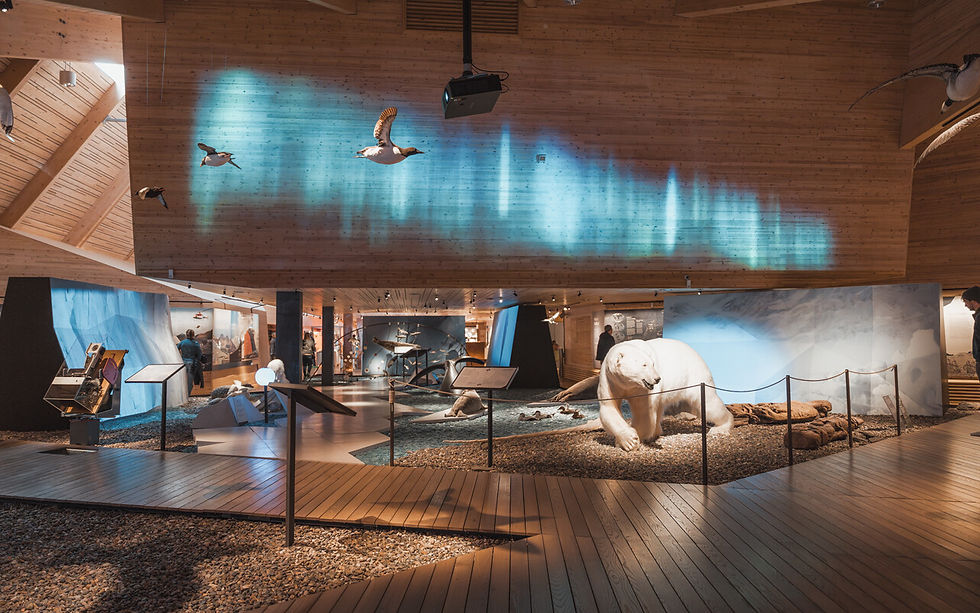
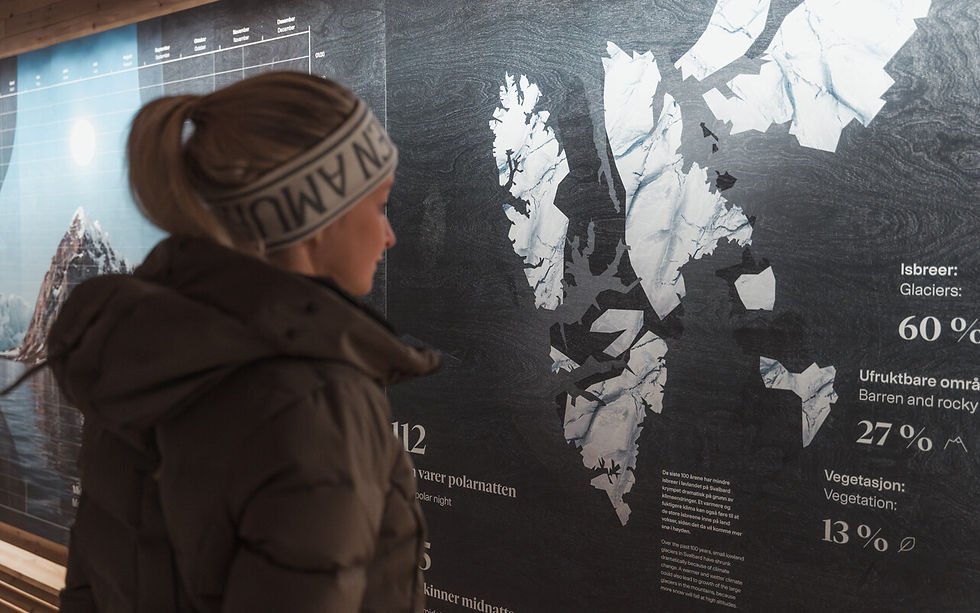
Svalbard Church – The northernmost church in the world! It’s simple but super cozy – and you can even stop in for a coffee and have a chat with some of the locals. A really special place.

Polar Bear Warning Signs – There are 5 of these signs around Longyearbyen marking the town limits and the start of the polar bear danger zone. Beyond this point, you’re only allowed to go if you’re armed or with a certified guide. We think they make for a really cool and unique photo spot! By the way: there’s also a sign right outside the airport – placed there just for photos.

Café Huskies – Rustic, cozy, and home to seriously delicious cinnamon rolls. There are real huskies living here that you can pet. It’s the perfect place to take a break and warm up a little.


Galleri Svalbard – A small but charming art gallery featuring local artists, photography, and crafts. Definitely worth a quick visit if you're into art or just looking for something a bit different.
Huset – A legendary building that once served as a community hall. Today, it’s a restaurant with its very own brewery. A great spot for a cozy evening out.
Svalbard Global Seed Vault – The famous global seed vault, where plant seeds from all over the world are stored to protect them in case of global catastrophes. It’s located near the airport – we didn’t make it there ourselves, but it’s definitely one of the island’s most fascinating places.
4. Our Personal Experience in Longyearbyen
Our first day in Longyearbyen before boarding the ship was the perfect way to settle in and get used to the Arctic vibe. We strolled through town, snacked on cinnamon rolls at Café Huskies, and visited the church. And right in the town center – believe it or not – we even spotted some reindeer wandering around!
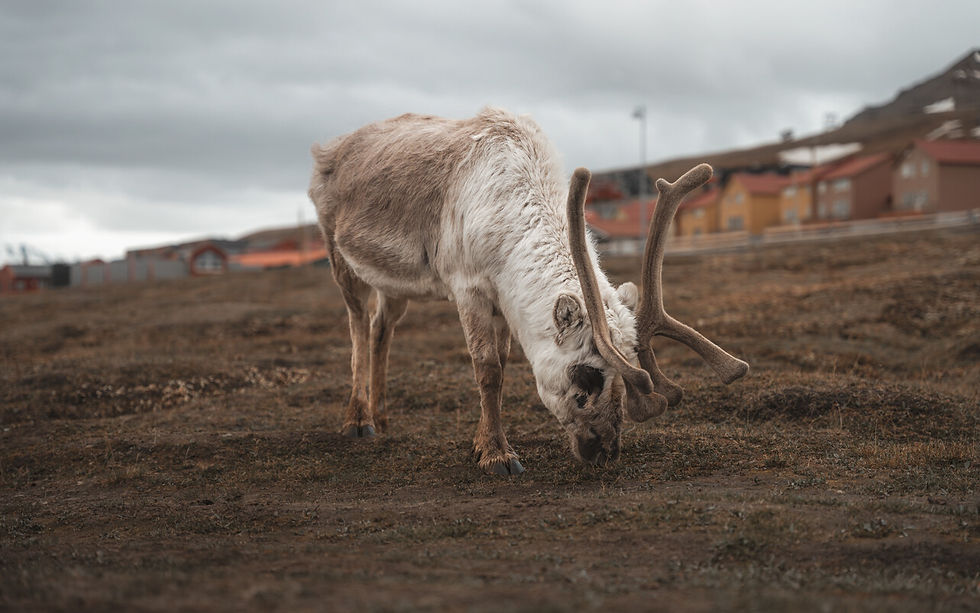
Experiencing 24-hour daylight was definitely something new for us – and honestly, it wasn’t that easy to go to bed while it was still bright outside. It really takes some getting used to! Since most hotel rooms can’t be completely darkened, we’d definitely recommend bringing a sleep mask* to help you fall asleep more easily.
After we returned from the ship expedition, we were honestly pretty wiped out. So we kept it simple and just visited the museum again – a relaxed way to wind down after the adventure.
What we did on both evenings in Longyearbyen: we had dinner at Restaurant Kroa. We both totally fell in love with the mushroom soup, and the cozy, warm atmosphere made it even better. Highly recommended!
5. Our Stay in Longyearbyen & More Hotel Tips
During our time in Longyearbyen, we stayed at the Coal Miners' Cabins* – a simple but charming hostel that reflects the town’s mining history. You can really feel the raw, rustic vibe of Svalbard here.
What we especially liked was the cozy common area with a bar and restaurant – the perfect spot to hang out in the evening and chat with other travelers over a drink.
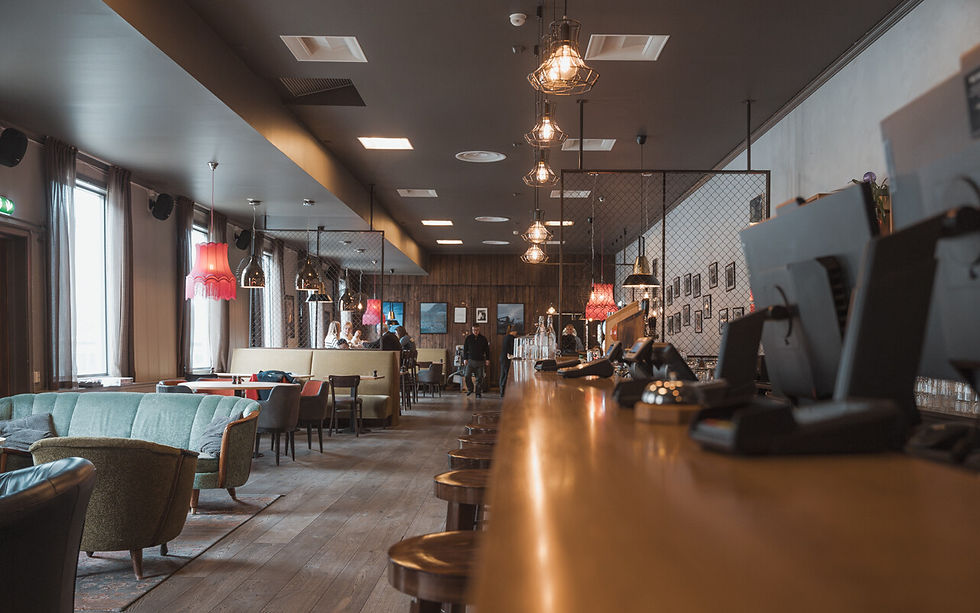
But just a heads-up: the hostel is located a bit outside the town center. It takes about 20–25 minutes on foot to get downtown – and when the icy wind kicks in, that can feel pretty rough. After our expedition cruise, we found it a bit too far out for our tired legs.
Our Tip: Stay Somewhere Central
If you’d rather stay in the heart of town, these hotels are great options:
Funken Lodge*: Stylish, luxurious, and with a stunning view over Adventfjorden. Perfect if you want to treat yourself before or after your cruise.
Svalbard Hotell – Polfareren*: A modern hotel located right in the center of Longyearbyen, super close to all restaurants and shops. Cozy rooms and perfect for keeping everything within walking distance.
Basecamp Hotel*: One of the most authentic places to stay in town, full of expedition vibes, rustic wood decor, and charming details. Also centrally located – ideal if you want to explore everything on foot.
Our Tip: If we were to come back, we’d choose a hotel in the town center for the night(s) before the cruise – maybe even stay two nights to settle in properly. And after returning from the ship, we’d go straight from the harbor to the airport instead of staying another night. |
6. Our Conclusion & Tips
Our conclusion: Longyearbyen is the perfect place to dive into the Arctic – but it’s definitely worth planning your stay properly.
Our top tips:
Arrive at least two days before your ship departs – just in case of flight delays
After the cruise, one short stop is enough – ideally fly home the same day
Don’t miss Café Huskies and the Svalbard Museum – true highlights!
Pack warm clothes – even in summer it can get really icy
Book a guided tour if you want to explore the surroundings (hello polar bears!)
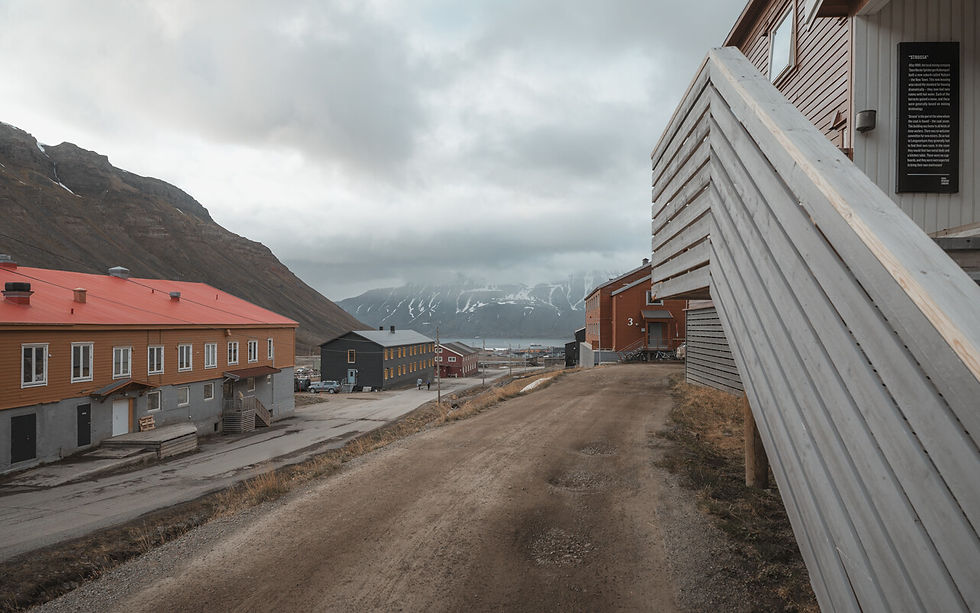
7. FAQ – Frequently Asked Questions about Longyearbyen
How many people live in Longyearbyen? Roughly 2,400 people live in Longyearbyen, making it the largest settlement on the Svalbard archipelago.
Why is Longyearbyen so well known? Because it’s the northernmost town in the world – and home to the Svalbard Global Seed Vault, a global seed storage facility that protects plant diversity in case of future crises.
How long is it dark in Longyearbyen? During the so-called Polar Night (from late October to mid-February), the sun doesn’t rise above the horizon – it’s dark 24/7. In return, there’s the Midnight Sun from mid-April to late August, where it never really gets dark.
When is the best time to visit Longyearbyen? That depends on what you're looking for:
Summer (May to September): Great for hiking, boat trips, and the Midnight Sun
Winter (October to April): Ideal for Northern Lights, snowmobile tours, and dog sledding adventures
We visited Svalbard between June and July as part of an Arctic expedition cruise.
What does the landscape look like? Absolutely stunning! Longyearbyen sits on Adventfjorden, surrounded by rugged mountains, glaciers, icy terrain, and endless tundra. In summer, it’s barren but fascinating with brown-green hues – in winter, it’s deeply snow-covered and almost mystical.
Typical for Svalbard:
No trees – it’s simply too cold
Lots of Arctic wildlife – reindeer, Arctic foxes, and (with a bit of luck) even polar bears outside of town
Wide, open spaces with incredibly clear air
Want more travel inspiration? Check out our Instagram channels: tom_rbg_ and anna_rbg_ – we’re happy to answer any questions about our routes via DM, too!
*This post contains affiliate links. If you purchase through them, it won’t cost you anything extra – but it helps support our work. Thank you!




